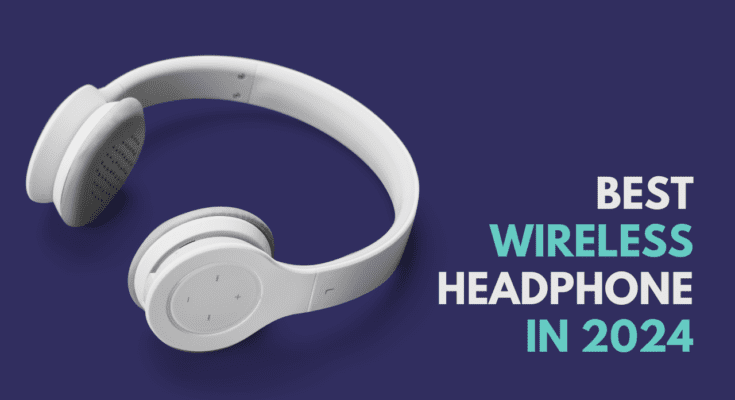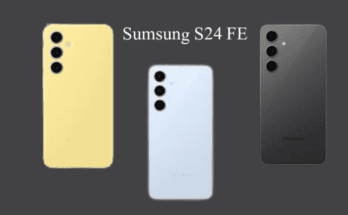Wireless Headphones
Introduction
In recent years, wireless headphones have surged in popularity, transforming how we experience audio in both personal and professional settings. This article delves into the evolution, benefits, considerations, and current trends of wireless headphones, highlighting their growing significance in the realm of modern audio technology.
Evolution of Wireless Headphones
Have evolved significantly since their inception, driven by advancements in Bluetooth technology and battery efficiency. Initially perceived as a compromise in audio quality compared to wired counterparts, modern headphones now offer impressive sound fidelity, effectively bridging the gap between convenience and audio performance.
Benefits of Wireless Headphones
1. Convenience: Headphones eliminate the hassle of tangled cords, offering freedom of movement without compromising audio quality. This convenience is especially valued in active lifestyles and professional environments where mobility is essential.
2. Enhanced Connectivity: Bluetooth connectivity allows seamless pairing with a variety of devices, including smartphones, tablets, and computers, enhancing versatility and usability.
3. Comfort and Design: Manufacturers have prioritized ergonomic designs and lightweight materials, ensuring prolonged comfort during extended use. This attention to comfort enhances the overall user experience, making wireless headphones suitable for everyday wear.
4. Noise Cancellation and Sound Quality: Many wireless headphones feature active noise cancellation (ANC) technology, reducing ambient noise for a more immersive listening experience. Additionally, advancements in audio engineering have elevated sound quality, offering rich bass, clear mids, and crisp highs comparable to premium wired models.
Considerations When Choosing Wireless Headphones
1. Battery Life: Evaluate the battery life offered by different models, considering usage patterns and charging frequency. High-capacity batteries ensure extended listening sessions without interruption.
2. Compatibility: Ensure compatibility with your devices and preferred audio sources. Bluetooth versions and codec support (such as aptX and AAC) can impact audio quality and connectivity range.
3. Fit and Comfort: Choose good headphones with adjustable headbands, plush ear cushions, and lightweight construction to ensure comfort during prolonged use.
4. Additional Features: Look for features such as touch controls, voice assistants integration, and multipoint connectivity for added convenience and functionality.
Current Trends in Wireless Headphones
1. True headphones Earbuds: Compact and cable-free, true wireless earbuds have gained popularity for their portability and discreet design, offering a wireless experience without compromise.
2. Gaming Headsets: Dedicated wireless gaming headsets feature low-latency wireless connections and immersive soundscapes, enhancing the gaming experience with spatial audio and clear communication.
3. Fitness and Active Lifestyle: Sweat-resistant and secure-fit designs cater to fitness enthusiasts, providing robust performance during workouts and outdoor activities.
Conclusion
Wireless headphones have become a cornerstone of modern audio technology, blending convenience, comfort, and impressive sound quality. As consumer preferences shift towards mobility and versatility, manufacturers continue to innovate, pushing the boundaries of wireless audio performance. Whether for leisure, work, or gaming, choosing the right wireless headphones involves balancing features, comfort, and audio fidelity to match individual preferences and lifestyle demands.
FAQs
Question No 1
Answer
The four types of wireless networks are:
1. Wireless PAN (Personal Area Network): This type of network covers a very small area, typically within a range of a few meters. Examples include Bluetooth connections between devices.
2. Wireless LAN (Local Area Network): WLANs cover a larger area than PANs, typically within a building or campus. Wi-Fi networks are a common example.
3. Wireless MAN (Metropolitan Area Network): MANs cover larger geographical areas, such as a city. WiMAX (Overall Interoperability for Microwave Access) is an illustration of a remote MAN innovation.
4. Wireless WAN (Wide Area Network): WANs cover the largest geographical areas, often spanning across cities, countries, or continents. Cellular networks (3G, 4G, 5G) and satellite networks fall into this category.
Question No 2
Why do people prefer wireless headphones?
Answer
People prefer wireless headphones for their convenience, portability, and freedom from tangled wires. They offer improved mobility, easy connectivity to multiple devices, and often come with advanced features like noise cancellation and better battery life.
Question No 3
Answer
It depends on your needs and preferences:
Hard-wired: More reliable, faster, and secure.
Wireless: Convenient, flexible, but can be slower and less secure in some cases.
Question No 4
What is the technology behind wireless headphones?
Answer
Wireless headphones use Bluetooth technology to connect to devices without wires. Bluetooth transmits audio signals using radio waves in the 2.4 GHz frequency range, allowing for high-quality sound transmission over short distances. Other components include a battery for power, a built-in amplifier, and speakers to convert electrical signals into sound.
Question No 5
What are wireless headphones used for?
Answer
Wireless headphones are used for convenient, cable-free listening to audio from devices such as smartphones, tablets, and computers, offering mobility and freedom of movement.
Question No 6
How popular are wireless headphones?
Answer
Wireless headphones have become extremely popular, driven by convenience, technological advances, and the removal of headphone jacks from many devices.
Question No 7
Are wireless headphones worth buying?
Answer
Yes, wireless headphones are worth buying for their convenience, mobility, and increasingly high audio quality, especially for those who prioritize freedom of movement and ease of use.
Question No 8
Is using wireless earphones good?
Answer
Yes, using wireless earphones can be good for convenience and mobility, but it’s important to consider factors like battery life, sound quality, and potential health concerns related to prolonged use.
Question No 9
How do wireless headphones work?
Answer
Wireless headphones work by receiving audio signals via Bluetooth or other wireless technologies from a paired device (like a phone or computer). These signals are then converted into sound waves by the headphone speakers, allowing you to listen without the need for a physical connection to the audio source.
Question No 10
What are the benefits of a wireless headset?
Answer
Wireless headsets offer convenience, freedom of movement, reduced cable clutter, and compatibility with various devices, enhancing user mobility and flexibility.
Question No 11
Answer
Wireless offers greater flexibility, allowing mobility without being tethered to a specific location. It reduces clutter and eliminates the need for complex cable management. It simplifies setup and installation, often requiring less infrastructure. Additionally, wireless technology enables easier expansion and adaptation to changing environments or needs.



